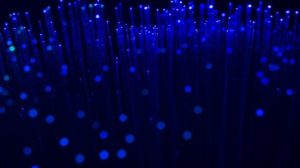
Have you heard of light guides? They are commonly used in keypads and membrane switches. Whether you’re shopping for keypads or membrane switches to use in your business’s operations, you may want to consider light guides. With that said, you might be wondering what light guides are exactly and how they work.
What Are Light Guides?
Light guides are filament-based components that are designed to distribute light. They don’t actually produce light. Rather, light guides distribute light so that all areas of a device’s top layer receive an equal amount of light.
Many keypads and membrane switches have illuminated buttons. The purpose of illuminated buttons is to increase visibility while simultaneously enhancing the device’s aesthetics. For keypads and membrane switches with illuminated buttons, light guides may be used. Light guides will distribute the light so that all of the buttons — or other areas of the top layer — receive an equal amount of light. They are known as “light guides” because they guide the light to distribute it.
How Light Guides Work
While there are different types of light guides, they all work in a similar way. Light guides are comprised of transparent filaments, such as plastic or glass filaments, that distribute light across a keypad’s or membrane of switch’s top layer.
As long as a keypad or membrane switch has a backlighting system, it will typically support light guides. Light guides are placed in front of the backlighting system. When the backlighting system turns on, it will produce light. The light will travel through the light guides where it’s then distributed across the top layer of the keypad or membrane switch.
Benefits of Choosing Light Guides
With light guides, you don’t have to worry about bright spots. Light guides essentially eliminate the possibility of bright spots. They’ll take the light produced by the backlighting system, which they’ll distribute across the top of layer of the keypad or membrane switch.
Keypads and membrane switches are typically more energy efficient with light guides. This is because they can be designed with fewer light-emitting diode (LED) bulbs. Keypads and membrane switches without light guides will typically require more LED bulbs for their backlighting system. As a result, they’ll consume more energy. If you’re looking to buy energy-efficient keypads or membrane switches, you should consider choosing light guides. Hopefully, this gives you a better idea of light guides and how they work.
